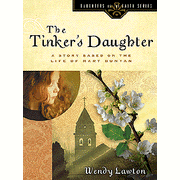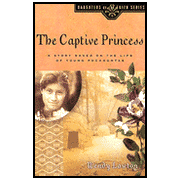A few years I read a book titled Honey for a Child's Heart by Gladys Hunt. I love this quote about what good books do:
"Good books have genuine spiritual substance, not just intellectual enjoyment. Books help children know what to look for in life. Reading develops the taste buds of the mind as children learn to savor what is seen, heard, and experienced and fit these into some kind of worthwhile framework." Gladys Hunt, Honey for a Child's Heart, p. 21
There is a saying that goes "You are what you eat". Essentially, what you put into your body shapes how your body feels and what you are able to do. In the same way, you might be able to say "You are what you read." Our minds are stretched or stunted by what we read and put into our minds. What we read feeds how we interact with others and with the world around us. It shapes our worldview. What we read doesn't determine our actions and thoughts, but it does feeds them.
After reading Ms. Hunt's book, I desired for my children to grow to love good books. I knew they needed to be fed a diet of good books rather than "junk" books. So began my search...
Over the past two years my oldest daughter has grown to love reading. Her reading level happens to be above her maturity level at the age of 7. So, I am on a constant search for books that are appropriate for her to read. Recently, I had the chance to read two books from a series of historical fiction Wendy Lawton has written for girls, the Daughters of the Faith series.
The first book I read was The Tinker's Daughter. It is a story based on the life of Mary Bunyan. John Bunyan, the puritan preacher who wrote Pilgrim's Progress, had 10 children. Only the name of one of them is known, Mary. It is also known that she was blind from birth. This story is loosely based upon those few facts and what can be known about what life was like for the Puritans. At the beginning of the story, John has been taken to Prison and his second wife Elizabeth is expecting her first child. Mary sets out at the beginning to find a way to provide for their family while her father is in prison.
There are several things I love about this story.
-It is well written. Attention was paid to details--even in how color was described in terms of sound or touch, which is appropriate when speaking to someone who has never seen color (or at least that's what I found when I researched it).
-I like the use of the glossary at the back and the italicized words to help readers know which words are explained in the glossary. It is very helpful and makes the story more sound more feasible.
-The story of how Mary came to truly trust God to take care of her and her family was a sweet, hopeful, and encouraging story.
-I am glad that the author explained at the end what is and isn't known about Mary Bunyan. This will help readers understand that this is historical fiction--but it is not a biography. Just as many movies say they are based upon a real story, so are many books. These adaptations are not 100% true to the real story, but they resemble what is known.
I did ask Autumn to read it and she acquiesced, but she didn't get into it. I think this is because though she can read the book, she still wants a few pictures. This would be a great book for 4th-8th grade girls. It is listed in Heart of Dakota's history read alouds for 6-8th grades.
The second book from this series is The Captive Princess. This story is based upon the life of young Pocahontas. Wendy Lawton follows the same format of using a glossary to help readers with words that are important to the story and that need to be explained. Her writing again is engaging and interesting. I could picture what Pocahontas' world was like. I have to admit that I knew very little about Pocahontas until I read this story. It again is a historical novel based on what is known about Pocahontas' life. I was drawn in more by Mary Bunyan's story, but both stories are good reads. They are books that I would feel comfortable with my daughters reading. I know that they will remember who Pocahontas was after reading this story. Heart of Dakota's reading program also recommends this book as part of their 4th-5th grade optional selections for girls. Knowing that confirms to me that this book is appropriate for girls in grades 4-8.
There are 8 books in Ms. Lawton's Daughters of the Faith series. They are each set within 1600-1950. These books could be a great supplement to your homeschool history curriculum or reading for historical/biographical fiction. Some of the stories, I suspect, are more based upon fact than others simply because there are some figures in history that more is known about than others. If you're not homeschooling, I would also recommend these books to parents who have children in school and are looking for good books for their daughters to read.
I highly recommend this series for girls in this age range. Yes, I did say "girls". I happen to be one of those people that believes girls are more likely to be interested in some books than boys--and that the same is true in reverse about other books.
Please note that I received complimentary copies of these books for review from Moody Publishing.


No comments:
Post a Comment